Values, Leadership, and Change»
(ISBN-13: 978-1405133562)

HR analytics is a powerful tool that can help organizations make data-driven decisions about their workforce. However, ensuring that the data being used is accurate and reliable is crucial. In this scenario, an HR influencer stated, "Stress factors explain up to 9% of turnover," based on an article [1] with many numbers. This statistic caught your attention, as reducing turnover is crucial for controlling costs and retaining talent. As a responsible manager, you decided to check the validity of this statement by consulting with three different AIs. Unfortunately, none of the AIs provided positive confirmation of the statement.
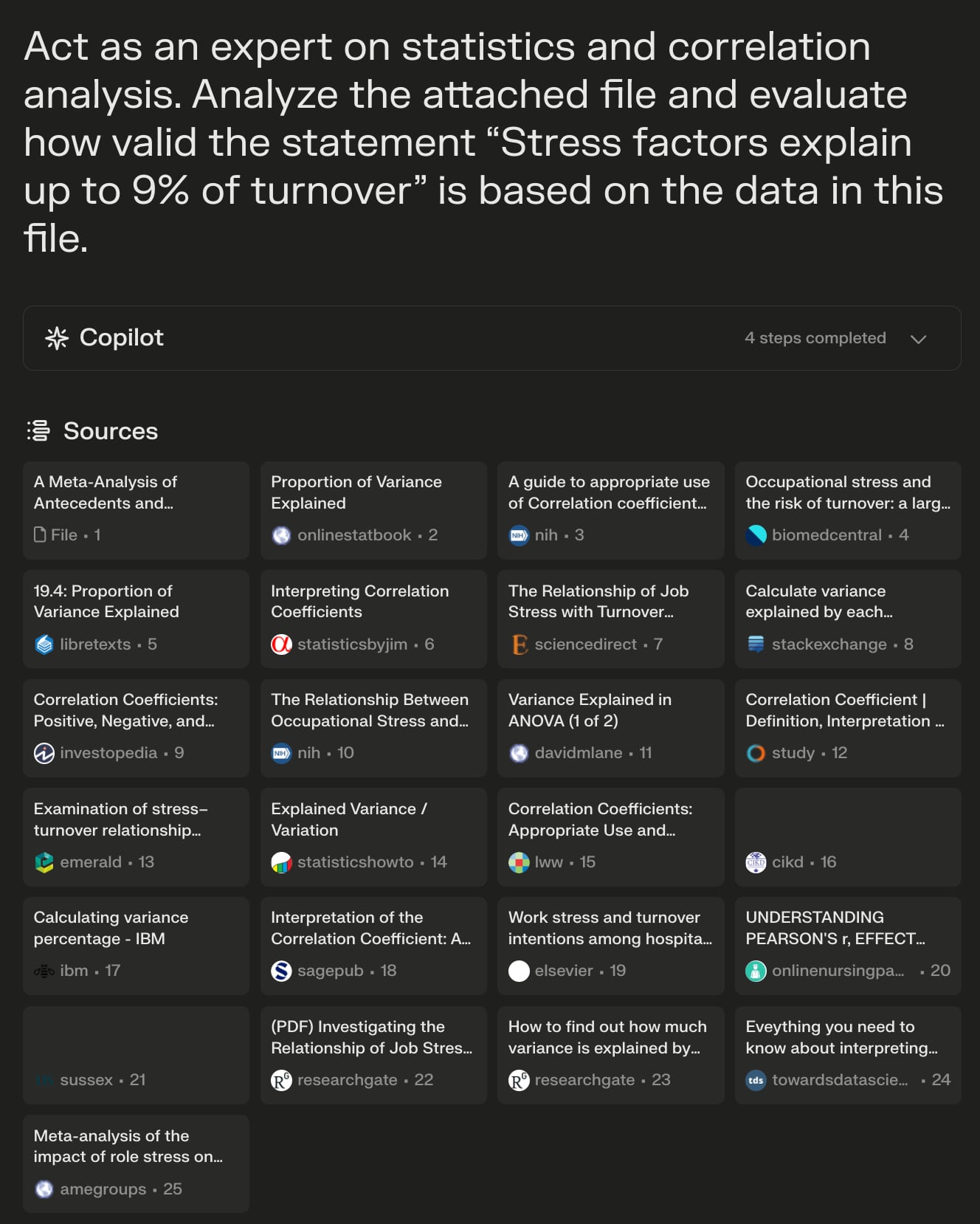
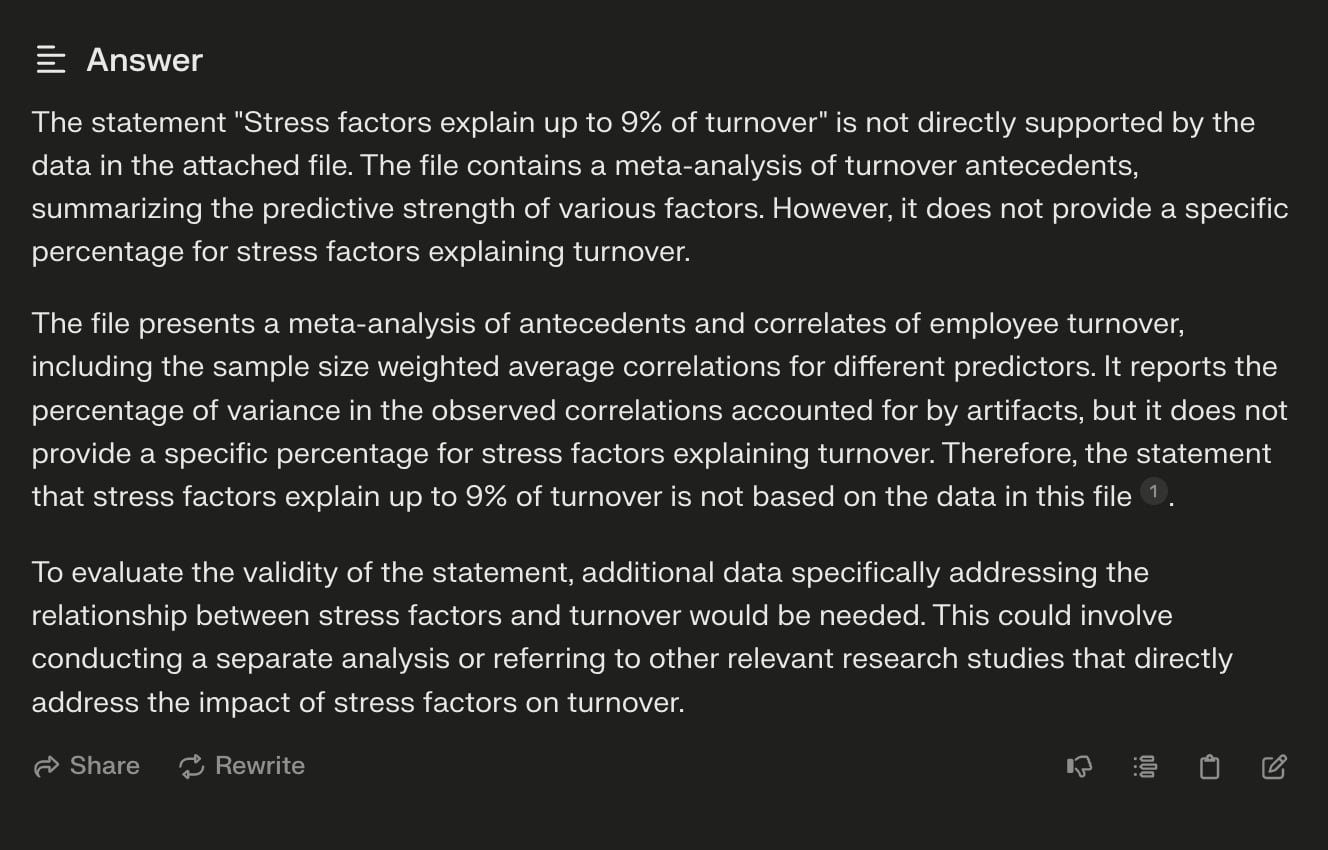
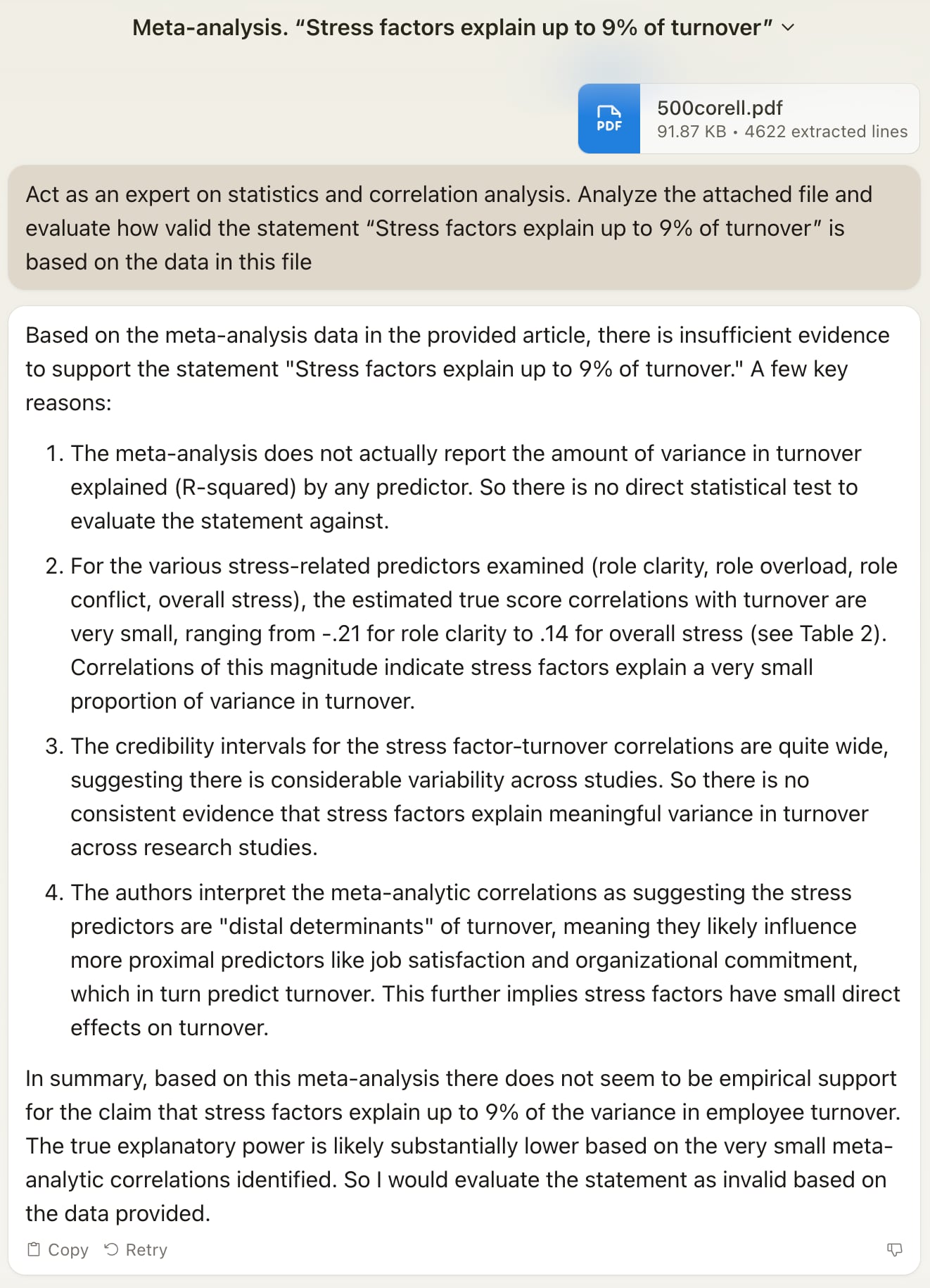
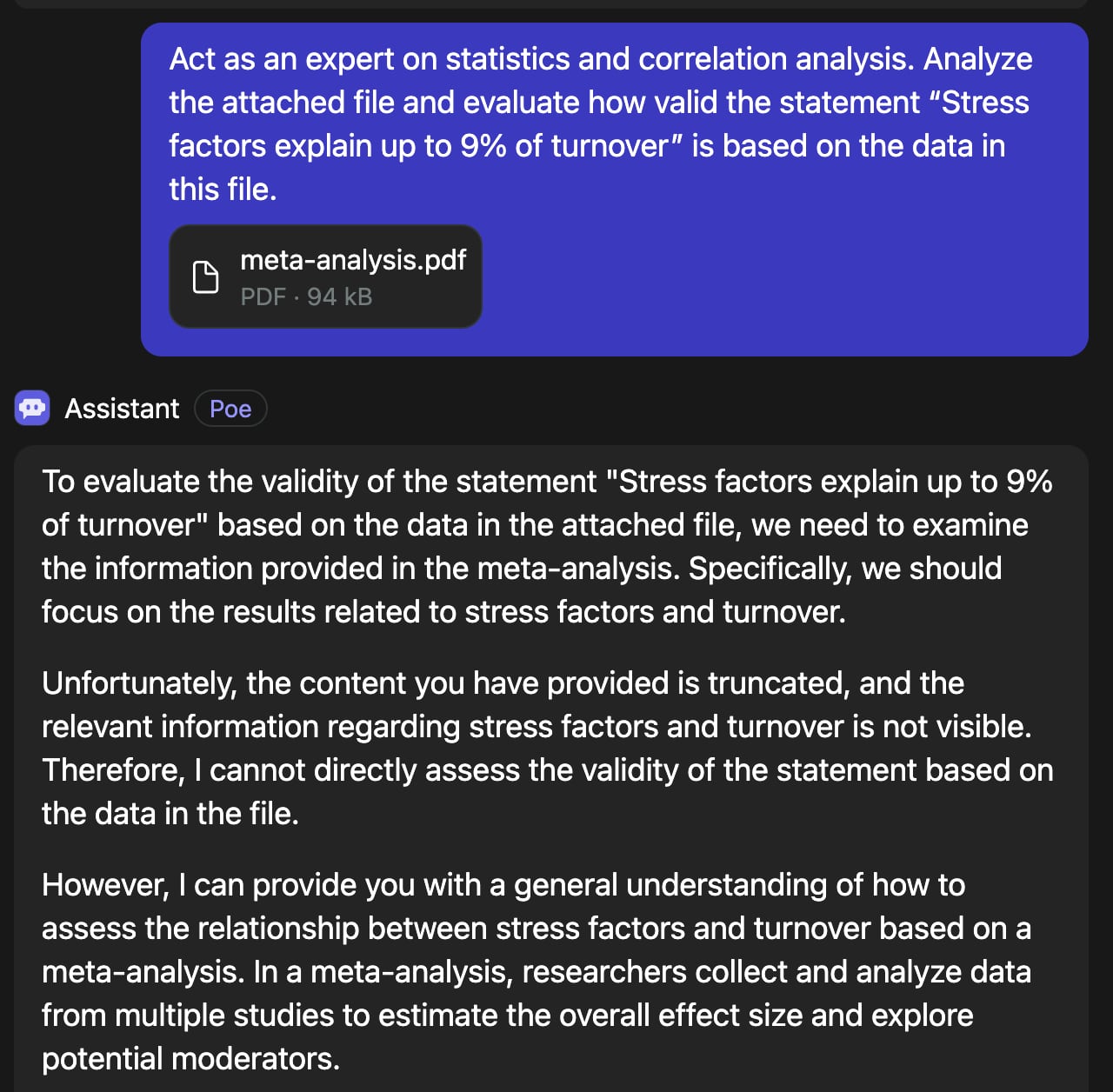
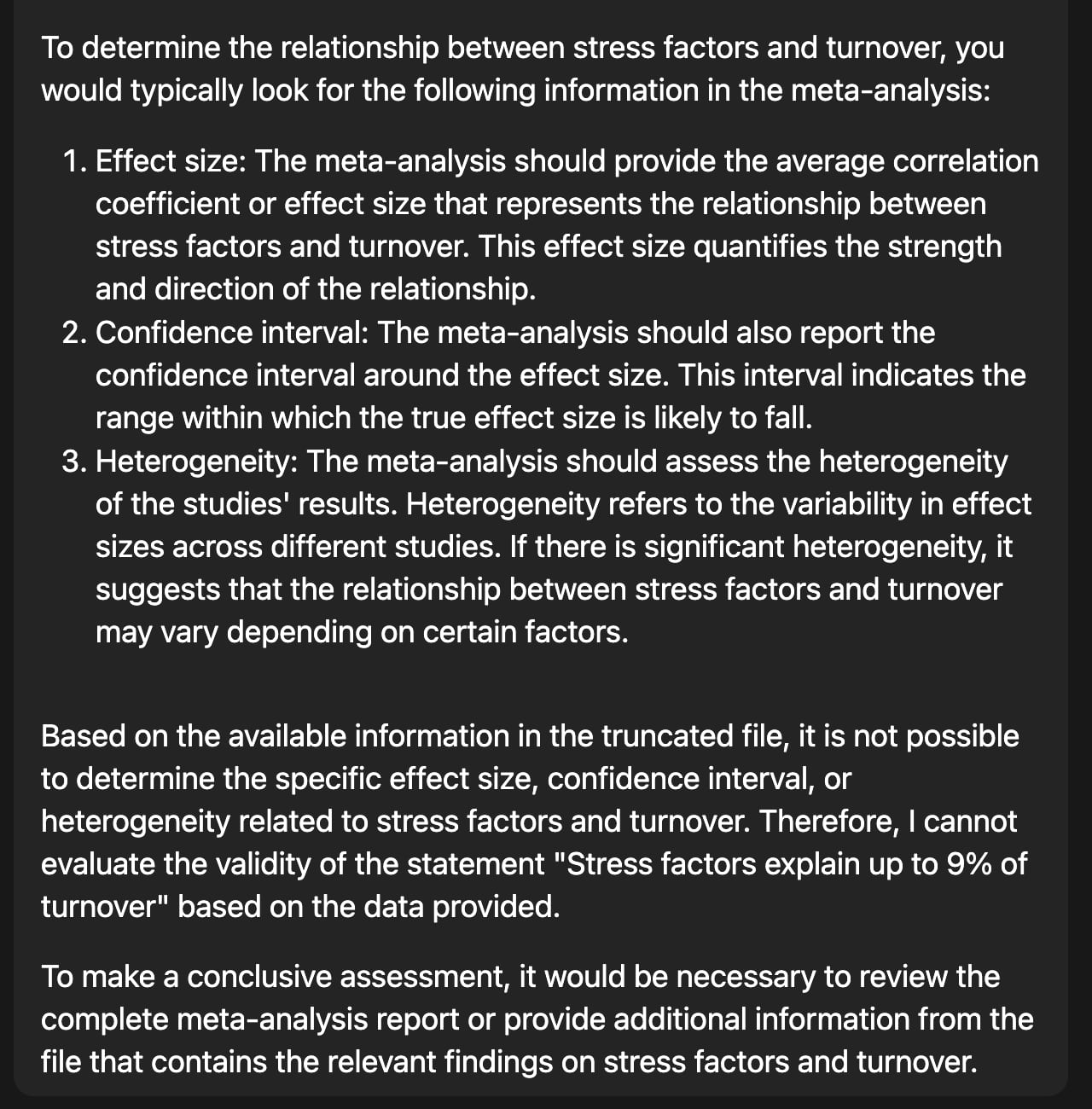
This leaves you uncertain about who to trust more – the HR influencer or the skeptical AIs. The HR influencer presented himself as an authority but did not share proof. The AIs admit the limits of what claims they can validate based on accessible knowledge bases. As a decision-maker, you cannot afford to use statistics that are unfounded or risk-making choices without empirical evidence.
To evaluate who to trust, it is essential to consider the source of the statement and the data being used. The HR influencer who made the statement did not explain how they arrived at the 9% figure, so it is unclear what data they used to support their claim. On the other hand, the AIs utilized data from a meta-analysis of turnover antecedents, which is a comprehensive review of the predictive strength of numerous turnover antecedents. The meta-analysis did not provide a specific percentage for stress factors explaining turnover, but it did identify various moderators of antecedent-turnover correlations.
This information makes it more reasonable to trust the AIs that provided arguments refuting the statement. The meta-analysis used by the AIs is a more reliable data source than an HR influencer who did not explain their methodology. It is essential to use accurate and reliable data when making decisions that will have financial and non-financial consequences on the workforce.
Anecdotes and hearsay do not justify budget expenditures or workforce structuring that impacts real employees. As an ethical leader, you prioritize transparency and credible proof over assumptions or rules of thumb when shaping internal policies. A statement may sound impactful, but the devil is in the details when basing business decisions on statistics.
In conclusion, HR analytics is a powerful tool to help organizations make data-driven decisions about their workforce. However, ensuring that the data used is accurate and reliable is essential. In this scenario, it is more reasonable to trust the AIs that provided arguments refuting the statement that "Stress factors explain up to 9% of turnover" based on a meta-analysis of turnover antecedents. It is essential to use accurate and reliable data when making decisions that will affect the workforce.
[1] Source: Griffeth, R. W., Hom, P. W., & Gaertner, S. (2000). A meta-analysis of antecedents and correlates of employee turnover: Update, moderator tests, and research implications for the next millennium. Journal of management, 26(3), 463-488.(https://journals.sagepub.com/doi/abs/10.1177/014920630002600305)
